Adding a radiator to your conservatory is an effective way to ensure that the space remains usable throughout the year.
Whether you’re planning to use the space as a living area, a dining room, or a home office, proper heating is crucial to maximise comfort.
This guide will walk you through everything you need to know about choosing and installing the right radiator for your conservatory.
From understanding the different types of radiators available to considering the installation process, you’ll find practical tips to make the best decision for your home.
Why Heating Your Conservatory Is Essential
Conservatories are often seen as ‘transitional’ spaces, blurring the line between indoors and outdoors. However, without adequate heating, these rooms can become too cold to use in winter, limiting their functionality – and what’s the point in having one if you only use it for half of the year?
Installing a radiator in your conservatory allows you to enjoy this space all year-round, making it a true extension of your home.
A well-heated conservatory can also increase the value of your property by adding usable square footage. Moreover, it improves energy efficiency by reducing the need for portable heaters, which are often less effective and more expensive to run.
Ensuring your conservatory is comfortable during colder months is not just about convenience; it’s also about making the most of your home’s potential.
Types of Radiators Suitable for Conservatories
Choosing the right radiator for your conservatory depends on several factors, including the size of the room, your existing heating system, and your budget.
Below, we’ll explore some of the most common types of radiators that work well in conservatories.
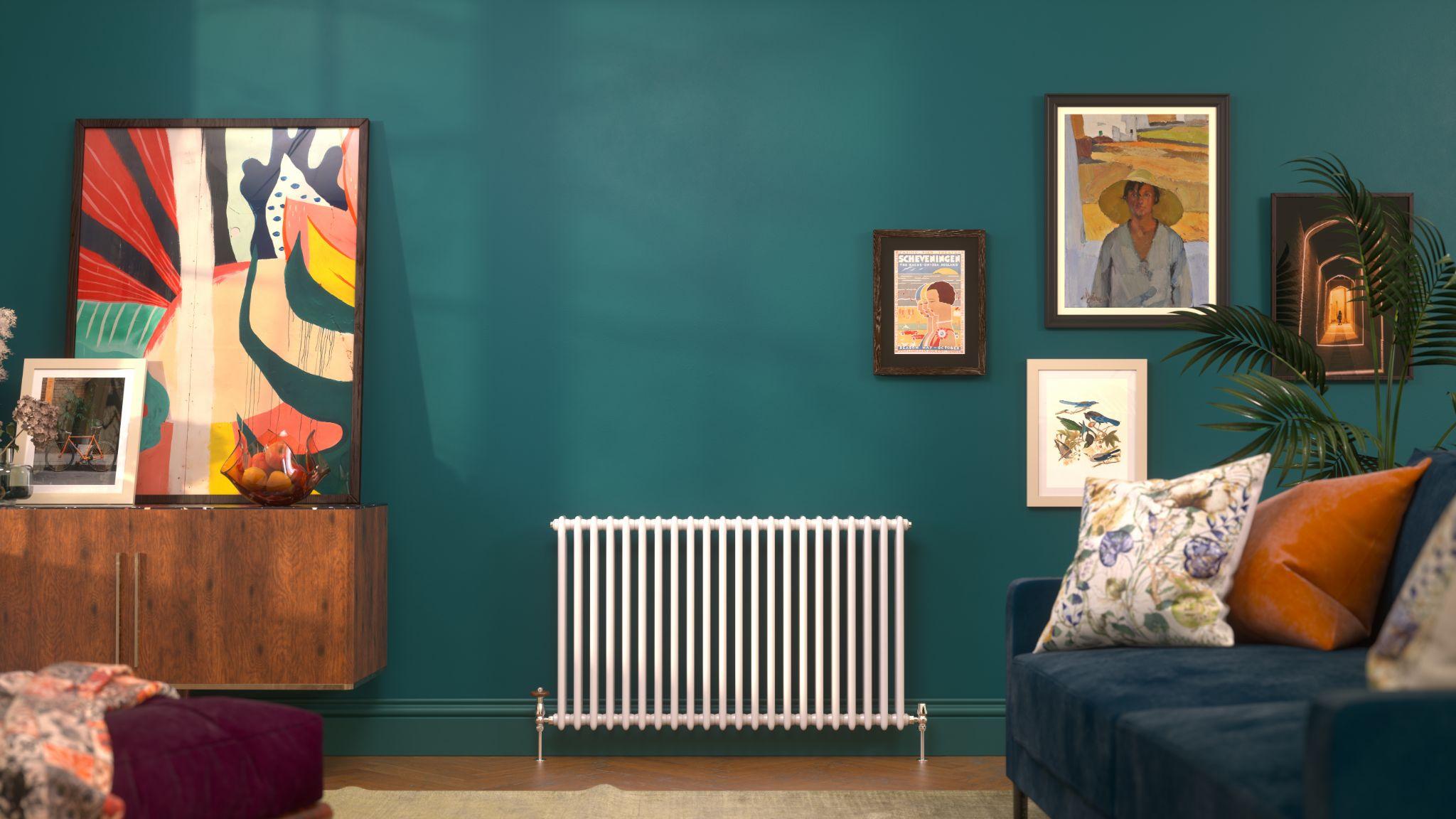
CAPTION – Classic white radiators could stand out in a colourful conservatory space
Electric Radiators
Electric radiators are a popular choice for conservatories due to their flexibility and ease of installation. Unlike central heating radiators, they don’t require any plumbing work, which makes them ideal for retrofitting. They can be wall-mounted or free-standing, offering various placement options to suit your space. Electric radiators also come in a range of styles, from traditional to contemporary, allowing you to match the decor of your conservatory. And they’ll never need bleeding, which makes them relatively maintenance free!
Central Heating Radiators
If your home already has a central heating system, extending it to your conservatory could be a practical option – but it’s important to check any planning permission you may need. Central heating radiators are often more efficient in the long run compared to electric models. They provide consistent heat and can be controlled via your existing thermostat, ensuring that your conservatory stays warm without additional effort. However, installation may require professional help, as it involves connecting the radiator to your central heating system.
Underfloor Heating
Underfloor heating is another option that’s gaining popularity, especially in modern conservatories. It provides even heat distribution and doesn’t take up any wall space, which can be a significant advantage if your conservatory has large windows or limited wall area. While underfloor heating tends to be more expensive to install, it offers a sleek, invisible solution that enhances the overall comfort of your conservatory.
Infrared panel heaters
Infrared panel heaters are an efficient and stylish option for conservatories, providing direct warmth by heating objects and people rather than the air. They offer quick heat, making them ideal for intermittent use, and their sleek design allows for wall or ceiling mounting, saving valuable space – which can often be at a premium in a conservatory. Easy to install and energy-efficient, infrared heaters are a modern solution that enhances both comfort and decor in your conservatory.
How to Choose the Right Radiator for Your Conservatory
Selecting the right radiator involves balancing factors such as room size, insulation, and your heating needs. Start by measuring your conservatory to determine the correct radiator size. A radiator that’s too small won’t heat the room effectively, while one that’s too large may lead to unnecessary energy consumption.
Consider the insulation quality of your conservatory as well. Older conservatories with single-glazed windows will lose heat faster, requiring a more powerful radiator. Double-glazing and other energy-efficient measures can reduce heat loss and allow you to opt for a smaller, more cost-effective radiator.
It’s also essential to think about the placement of the radiator. Positioning it near an external wall or under a window can help combat heat loss, but be sure not to obstruct natural light or the flow of traffic within the room. The style and design of the radiator should complement the overall aesthetic of your conservatory too, creating a cohesive look that enhances the space.
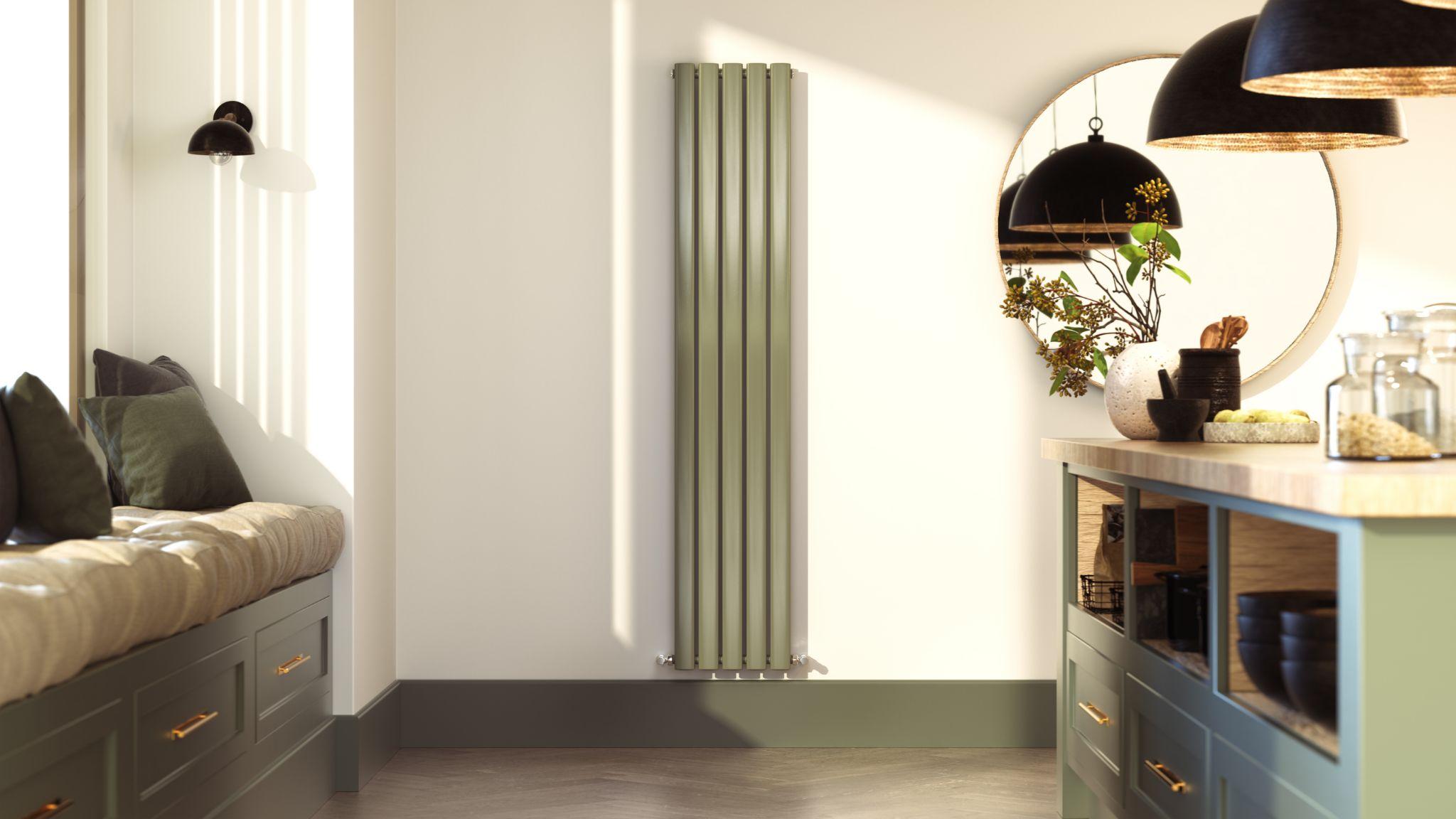
CAPTION – Adding a radiator in an unusual colour could enhance the look of your conservatory even more!
Installation Considerations for Conservatory Radiators
Installing a radiator in a conservatory comes with its own set of challenges. Due to the large windows and often limited wall space, finding the right location can be tricky. It’s important to ensure that the radiator is placed in a spot where it can heat the room effectively without obstructing views or blocking access.
If you’re adding a radiator to an existing central heating system, you’ll need to ensure that your boiler has enough capacity to handle the additional load. It’s always a good idea to consult with a professional installer to assess your current system and make recommendations. For electric radiators, make sure that your conservatory has sufficient electrical outlets, and consider whether you’ll need to install any new wiring.
The type of flooring in your conservatory can also affect installation. For instance, if you’re considering underfloor heating, the floor type will determine the installation process and the overall efficiency of the system. Concrete floors may require more intensive installation work compared to wooden floors. Regardless of the type of radiator you choose, always follow the manufacturer’s guidelines and consider professional installation to ensure safety and efficiency.
Benefits of Adding a Radiator to Your Conservatory
Adding a radiator to your conservatory offers numerous benefits that go beyond simple comfort. Firstly, it allows you to use the space year-round, turning your conservatory into a functional living area rather than a seasonal room. Whether it’s a cosy spot for morning coffee in winter or a comfortable space for evening relaxation, a well-heated conservatory enhances your home’s versatility.
Heating your conservatory can also contribute to better overall energy efficiency. By installing a radiator that is part of your central heating system or an efficient electric model, you reduce the need for less efficient, temporary heating solutions like portable heaters. This can lead to savings on your energy bills and a more consistent temperature throughout your home.
Moreover, adding a radiator can increase the value of your property. A conservatory that is warm and inviting in any season is more appealing to potential buyers, who will see it as an integral part of the living space rather than just an add-on. Additionally, a properly heated conservatory can serve various purposes, such as a home office or a playroom – or even an extra bedroom space – making your home more attractive and versatile.
Maintenance Tips for Conservatory Radiators
Maintaining your conservatory radiator is crucial for ensuring it continues to operate efficiently and effectively. Regular maintenance can also extend the lifespan of the appliance, saving you money on repairs and replacements in the long run.
One of the simplest maintenance tasks is bleeding your radiator to remove any trapped air that can reduce its efficiency. This is especially important for central heating radiators, as air can accumulate over time, leading to cold spots and reduced heating performance. Electric radiators may also benefit from occasional checks to ensure they are operating correctly, although they generally require less maintenance than central heating systems.
It’s also essential to keep the radiator clean and free from dust, as buildup can affect its heat output. Regularly dusting the radiator and ensuring that the space around it is free from obstructions will help it to heat your conservatory more effectively.
If you have underfloor heating, maintenance involves ensuring the system is free from blockages and that the thermostat is working correctly. Periodic checks by a professional can help keep the system in top condition.
Finally, always inspect your radiator for any signs of leaks or wear, particularly at the joints and valves. Addressing small issues early can prevent more significant problems later on, ensuring your conservatory stays warm and comfortable.
Conclusion
Adding a radiator to your conservatory is a smart investment that transforms it into a year-round living space, enhancing both comfort and functionality.
Whether you choose an electric radiator, central heating extension, underfloor heating, or an infrared panel heater, the right heating solution will ensure your conservatory remains warm and inviting, even in the coldest months.
By carefully considering your options and selecting a system that suits your needs and budget, you can enjoy the full potential of your conservatory as a versatile and comfortable part of your home.
John Lawless
John Lawless is an expert in home heating solutions. He is the Content Manager at BestHeating.com. Known for his informative and engaging approach to helping homeowners, John’s insights have regularly featured on BBC Radio in the UK and in numerous home and garden magazines discussing home heating best practice.

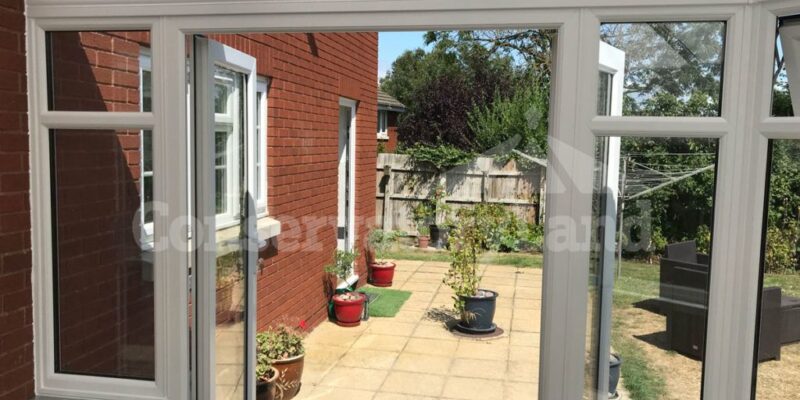
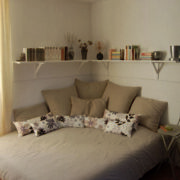




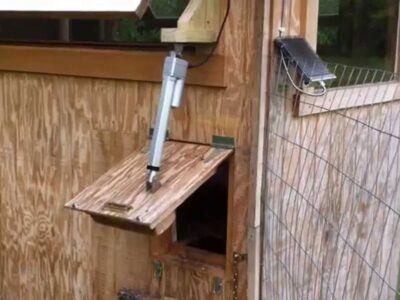






Comments